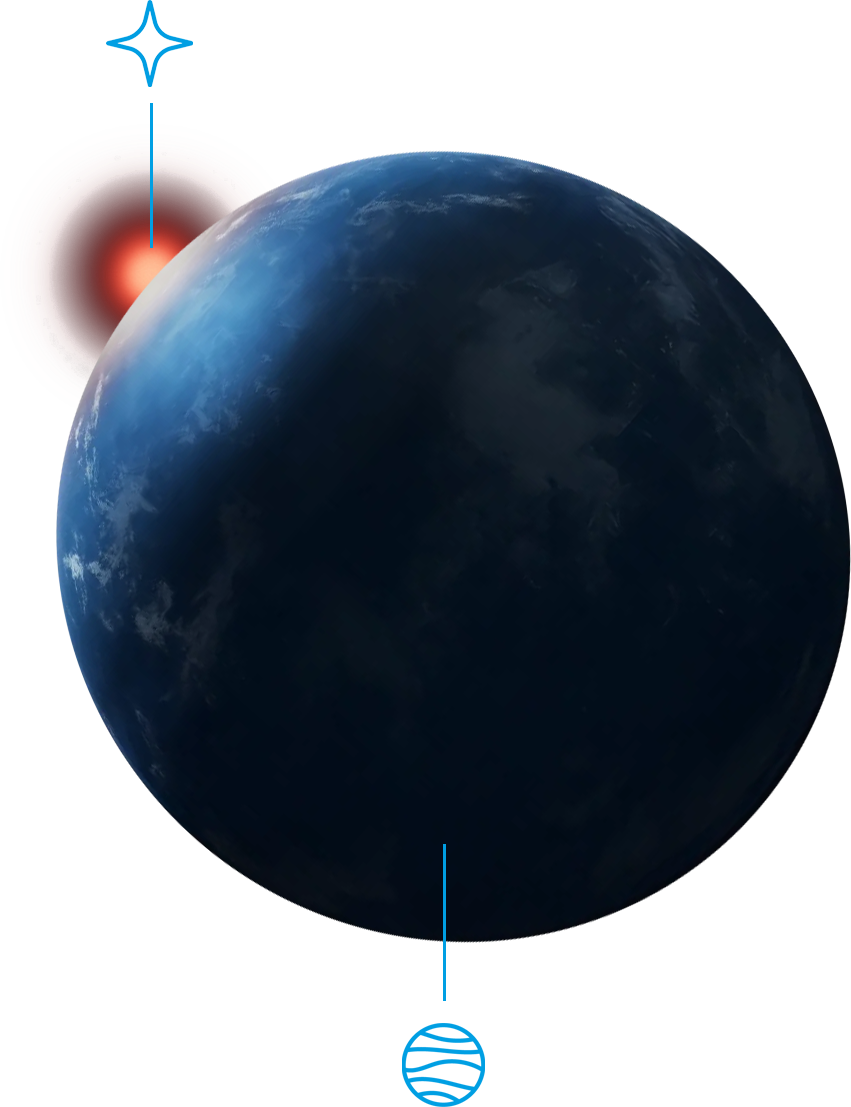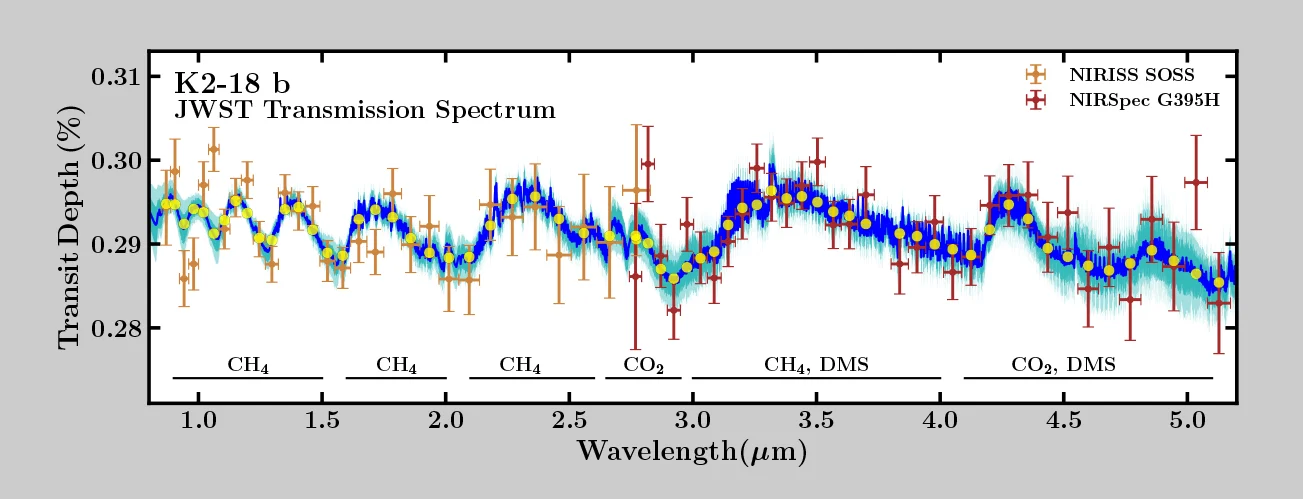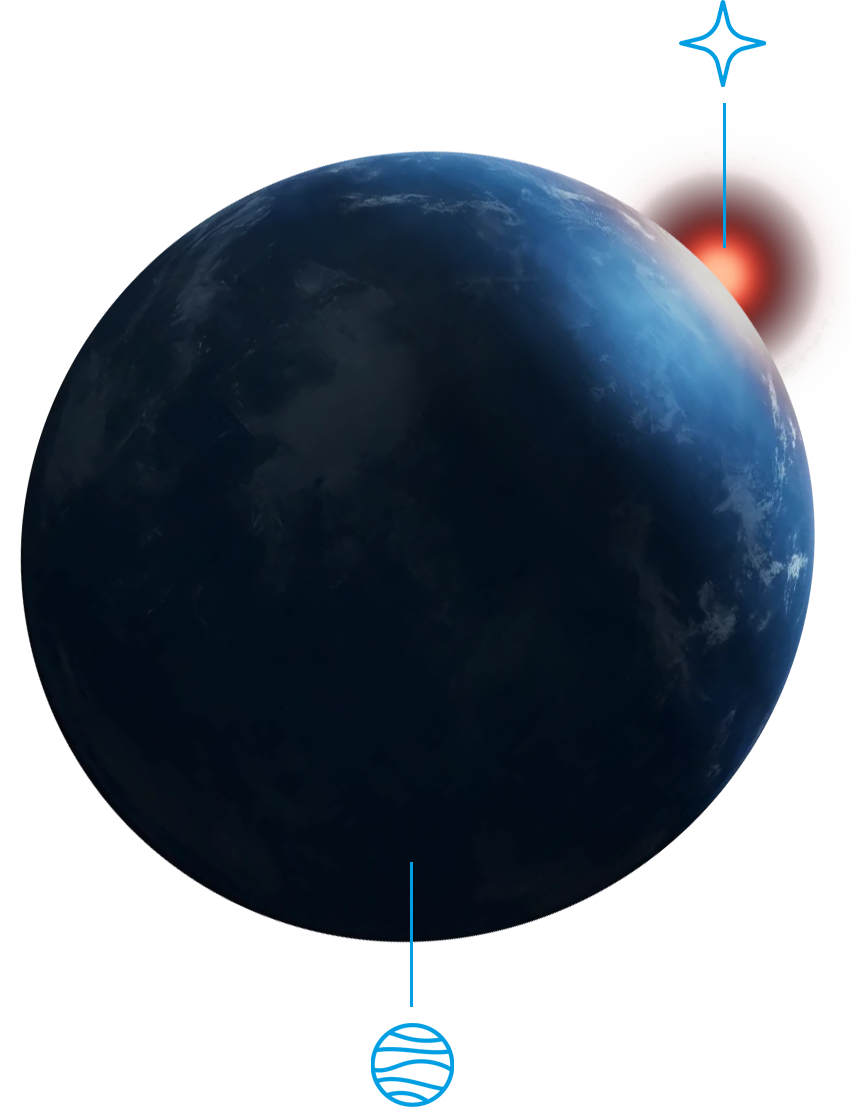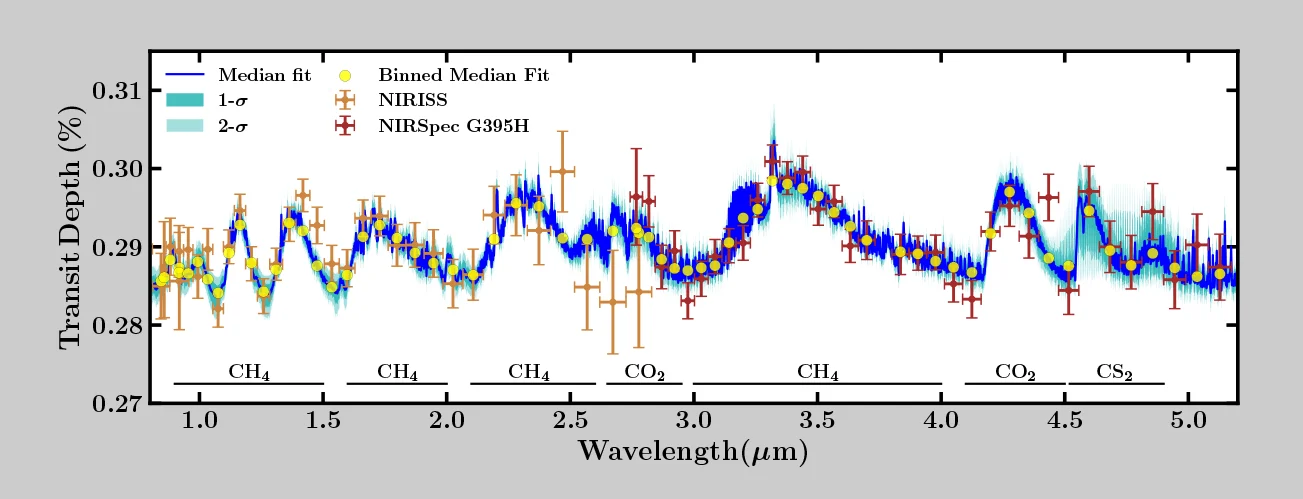Promising candidates for hycean worlds are identified based on atmospheric observations with the James Webb Space Telescope. These are planets for which the observed atmospheric composition is consistent with theoretical predictions for a hycean world.
K2-18 b
K2-18 b is the first habitable-zone exoplanet identified as a promising candidate for being a hycean world. Transmission spectroscopy with the JWST NIRSpec and NIRISS instruments in the 1-5 micron range led to the first detections of CH₄ and CO₂ (Madhusudhan et al. 2023b) in a habitable-zone exoplanet. These detections along with non-detections of NH₃ and CO, are consistent with predictions for a hycean planet (e.g. Madhusudhan et al. 2023a, Cooke & Madhusudhan 2024). The spectra also suggest a tentative inference of dimethyl sulfide (DMS), a potential biosignature that on Earth is known to be produced uniquely by life. However, more observations are needed to robustly confirm its presence and possible origin.

11h30m14.43s +07d35m16.19s
38.03 pc
13.48
0.50 Solar Mass
0.44 Solar Radii
M2.5V / 3457K
39 Days
2


8.63 Earth Mass
2.61 Earth Radii
1.26 Earth Gravity
32.94 Days
255
COsub>2, CHsub>4, and tentatively Dimethyl Sulphide (DMS)


TOI-270 d
The temperate sub-Neptune TOI-270 d was the second promising candidate for a hycean world identified with JWST observations (Holmberg & Madhusudhan 2024). The transmission spectrum of the planet reveals distinct absorption features from CH₄ and CO₂, similar to K2-18 b. Furthermore, the detections of those species and non-detections of NH₃ and CO are suggestive of a hycean world, with a potential ocean surface. Tentative evidence for H₂O and CS₂ is also observed, though at lower significance. The inferred atmospheric properties are consistent with predictions for hycean planets. However, the somewhat higher temperature on TOI-270 d compared to K2-18 b means that it could be a dark hycean world, with habitable oceans on the night side but the dayside being too hot to be habitable.

04h33m39.86s -51d57m26.62s
22.48 pc
12.60
0.39 Solar Mass
0.38 Solar Radii
M3V / 3506
140-150 Days
3


4.78 Earth Mass
2.13 Earth Radii
1.05 Earth Gravity
11.38 Days
354
CO2, CH4, tentative H2O, CS2, C2H6


Receive Email Updates
As we add news and content to the website, we'll email you to keep you updated!


